Kia has undergone a remarkable transformation over the past decade, evolving from a budget-focused automaker to a serious contender in the global automotive market.
This metamorphosis has been particularly evident in their approach to safety and reliability, where the Korean manufacturer has made significant strides in some areas while still facing challenges in others.
The brand’s commitment to safety innovation is reflected in their adoption of advanced driver assistance systems, structural improvements, and comprehensive testing protocols that have earned recognition from both the Insurance Institute for Highway Safety (IIHS) and the National Highway Traffic Safety Administration (NHTSA).
However, like any automaker transitioning through rapid growth and technological advancement, Kia’s model lineup presents a mixed picture when it comes to safety performance and long-term reliability.
While some vehicles have achieved prestigious Top Safety Pick awards and five-star ratings, others have struggled with structural vulnerabilities, inconsistent crash protection, or reliability concerns that raise questions about their value proposition.
Understanding these disparities is crucial for consumers going through Kia’s diverse portfolio, which spans from compact sedans to three-row SUVs and electric vehicles. The brand’s safety performance varies significantly across different model lines, with some representing excellent choices for safety-conscious buyers while others may require more careful consideration.
This comprehensive analysis examines ten key Kia models, dividing them into two distinct categories: five that consistently demonstrate strong safety credentials and solid reliability, and five that have faced notable challenges in safety testing or long-term dependability, providing consumers with the detailed information needed to make informed purchasing decisions.
5 Kias That Stay Safe and Solid
These exemplary vehicles earn top safety ratings through comprehensive airbag systems, reinforced passenger compartments, and advanced collision avoidance technology that consistently achieve five-star government ratings and insurance industry recognition for occupant protection excellence.
Their robust structural engineering incorporates high-strength steel construction, strategically placed crumple zones, and effective energy absorption that protects passengers during various crash scenarios while maintaining structural integrity under extreme impact conditions.
The combination of proven safety systems, reliable electronic stability control, and comprehensive testing validation creates ownership experiences that prioritize family protection above all other considerations.
From award-winning sedans with exemplary crash performance to top-rated SUVs with advanced driver assistance features, these vehicles demonstrate Kia’s commitment to safety excellence through rigorous development programs that exceed regulatory requirements and deliver genuine peace of mind for families seeking dependable protection.
1. 2025 Kia Telluride
The Kia Telluride stands as the crown jewel of Kia’s safety achievements, representing everything the brand has learned about building a secure, reliable three-row SUV.
This flagship model has consistently earned top marks from safety organizations, with the 2025 model receiving the coveted IIHS Top Safety Pick+ award, demonstrating excellence across all crash test categories and advanced safety features.
The Telluride’s robust construction features a high-strength steel frame designed to absorb and distribute crash energy effectively, while its spacious interior design allows for optimal airbag placement and passenger protection.
The vehicle’s comprehensive suite of standard safety technologies, known as Kia Drive Wise, includes forward collision avoidance with pedestrian and cyclist detection, blind spot collision avoidance, rear cross-traffic collision avoidance, and lane keeping assist.
These systems work seamlessly together, creating multiple layers of protection that actively prevent accidents rather than simply responding to them.
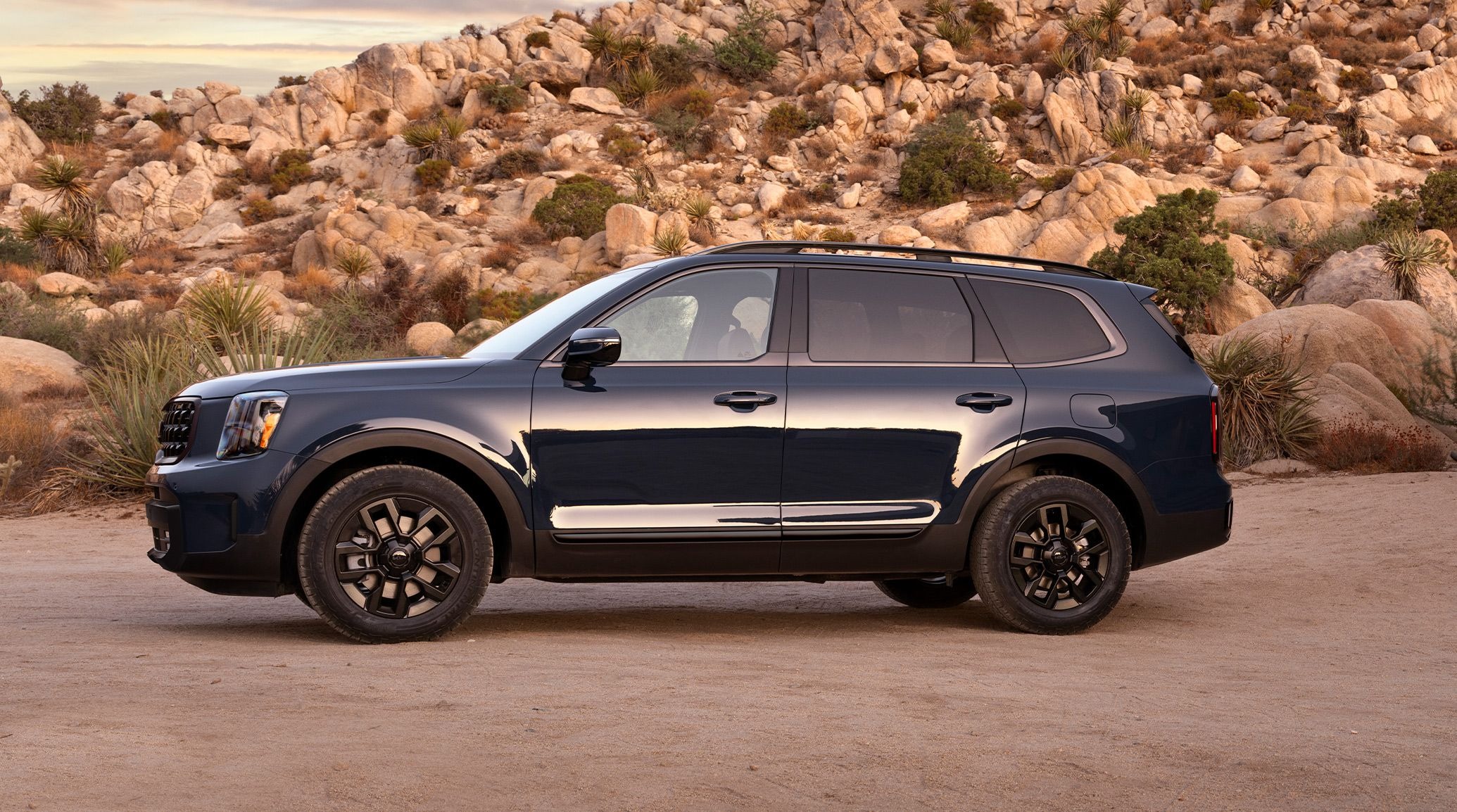
The Telluride’s adaptive cruise control with stop-and-go functionality reduces driver fatigue on long journeys, while its highway driving assist feature provides semi-autonomous driving capabilities on divided highways.
Reliability-wise, the Telluride has proven itself over its relatively short production run, with owners reporting minimal issues and strong satisfaction scores.
The vehicle’s 3.8-liter V6 engine has demonstrated durability, while the eight-speed automatic transmission provides smooth, reliable performance.
Build quality has been consistently praised, with tight panel gaps, quality interior materials, and robust mechanical components that inspire confidence in long-term ownership.
The Telluride’s safety extends beyond crash protection to include practical features like safe exit assist, which prevents doors from opening when vehicles or cyclists are approaching, and rear occupant alert, which reminds drivers to check for passengers or pets in the rear seats.
These thoughtful additions demonstrate Kia’s holistic approach to safety, considering real-world scenarios that extend beyond traditional crash testing. With its combination of structural integrity, advanced technology, and proven reliability, the Telluride represents the pinnacle of Kia’s safety engineering.
2. 2025 Kia K4
The all-new 2025 Kia K4 compact sedan has immediately established itself as a safety leader in its segment, earning the 2024 IIHS Top Safety Pick award in its debut year.
This achievement is particularly impressive for a compact vehicle, where space constraints often force compromises in safety design. The K4’s advanced high-strength steel structure provides exceptional rigidity while maintaining efficient weight distribution, resulting in excellent crash test performance across all categories including the challenging small overlap front test.
The K4’s safety technology suite rivals that of luxury vehicles, featuring standard forward collision avoidance with junction turning, which can detect oncoming traffic during left turns and automatically apply brakes if necessary.
The vehicle’s blind spot view monitor displays real-time camera feeds in the instrument cluster, providing drivers with a clear view of adjacent lanes during lane changes. These advanced features work in conjunction with traditional safety systems like electronic stability control and traction control to create a comprehensive safety net.
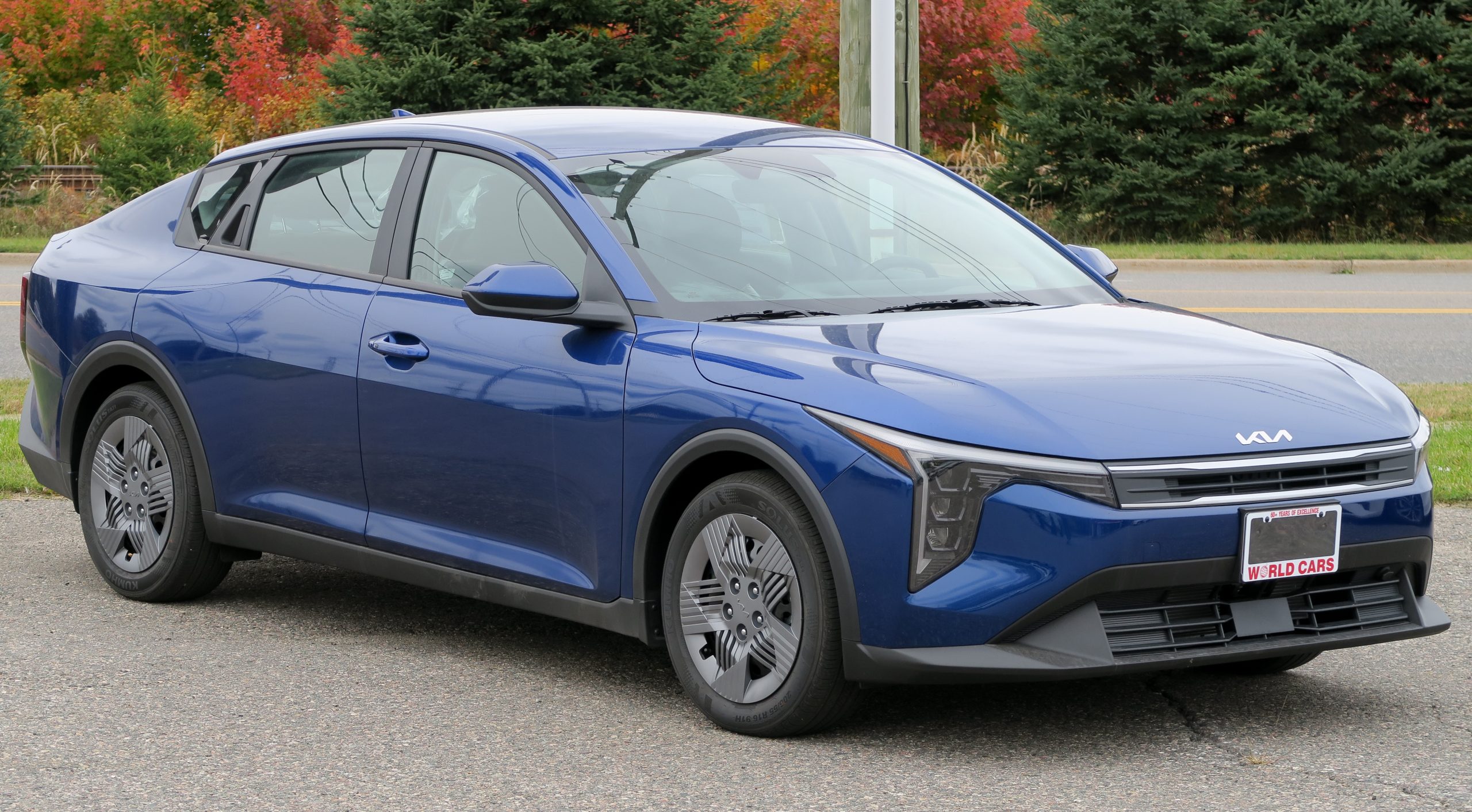
What sets the K4 apart is its predictive safety approach, utilizing radar and camera sensors to anticipate potential hazards before they become imminent threats.
The system can detect when a vehicle ahead suddenly stops or when a pedestrian enters the roadway, providing visual and audible warnings followed by automatic emergency braking if the driver doesn’t respond.
This proactive safety philosophy extends to features like smart cruise control with stop-and-go functionality, which maintains safe following distances and can bring the vehicle to a complete stop in traffic.
The K4’s structural design incorporates lessons learned from years of crash testing, with strategic placement of ultra-high-strength steel in critical areas and energy-absorbing zones that redirect impact forces away from the passenger compartment.
The vehicle’s restraint system includes dual-stage airbags that deploy with varying force depending on crash severity and occupant size, while side-impact airbags and curtain airbags provide comprehensive protection in side-impact scenarios.
This combination of intelligent structure and advanced restraint systems has earned the K4 recognition as one of the safest compact sedans available, proving that Kia can deliver top-tier safety even in smaller, more affordable vehicles.
3. 2024 Kia Sorento
The Kia Sorento has established itself as a reliable and safe choice in the competitive mid-size SUV segment, earning a five-star safety rating from NHTSA and consistently strong marks from IIHS testing.
This three-row SUV demonstrates Kia’s ability to balance family-friendly practicality with uncompromising safety standards, featuring a rigid body structure that excels in both frontal and side-impact protection while maintaining the versatility families demand.
The Sorento’s safety credentials are built on a foundation of structural excellence, with a body-on-frame-like rigidity achieved through advanced welding techniques and strategic reinforcement.
The vehicle’s crumple zones are precisely engineered to absorb impact energy while maintaining passenger compartment integrity, a balance that’s particularly challenging in SUVs due to their higher center of gravity.
The Sorento’s low rollover risk and stable handling characteristics further enhance its safety profile, making it suitable for families who prioritize both everyday usability and emergency situation performance.
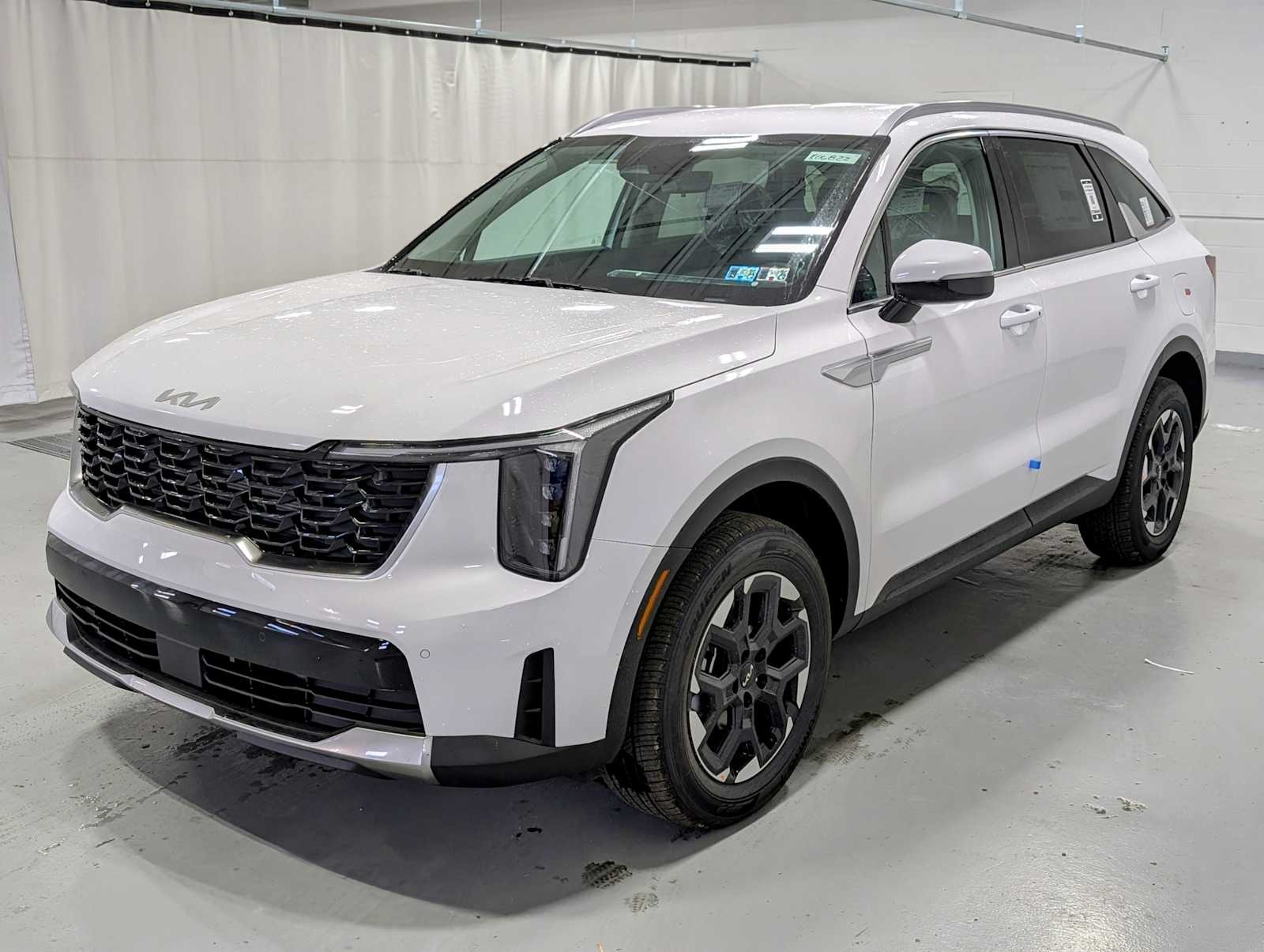
Advanced driver assistance systems in the Sorento include highway driving assist, which combines adaptive cruise control with lane centering to reduce driver fatigue on long trips.
The system’s radar and camera sensors continuously monitor traffic conditions, automatically adjusting speed and steering inputs to maintain safe positioning within the lane.
Safe exit assist prevents occupants from opening doors when approaching vehicles or cyclists are detected, while rear cross-traffic collision avoidance helps prevent backing accidents in parking lots and driveways.
Reliability has been a strong point for the Sorento, with owners reporting minimal issues with the available powertrains, including the turbocharged four-cylinder and hybrid options.
The vehicle’s hybrid system has proven particularly robust, with the electric motor and battery system showing excellent durability. Interior build quality remains consistent over time, with materials and controls maintaining their appearance and function even after extended use.
The Sorento’s combination of proven reliability, strong safety ratings, and practical design makes it an excellent choice for families seeking a dependable three-row SUV that doesn’t compromise on protection.
4. 2024 Kia Sportage
The 2024 Kia Sportage has earned its place among Kia’s safest vehicles by achieving the IIHS Top Safety Pick award, a testament to its excellent crash protection and advanced safety technology integration.
This compact SUV demonstrates that smaller vehicles need not sacrifice safety for efficiency, incorporating many of the same structural and technological advances found in larger Kia models while maintaining the maneuverability and fuel economy that compact SUV buyers demand.
The Sportage’s structural design utilizes an optimal mix of conventional and high-strength steels, creating a rigid safety cage that effectively manages crash energy distribution.
The vehicle’s front and rear crumple zones are carefully calibrated to absorb impact energy while maintaining the integrity of the passenger compartment, a particularly impressive achievement given the space constraints inherent in compact SUV design.
Side-impact protection is enhanced through reinforced door frames and strategically placed impact beams that redirect crash forces away from occupants.
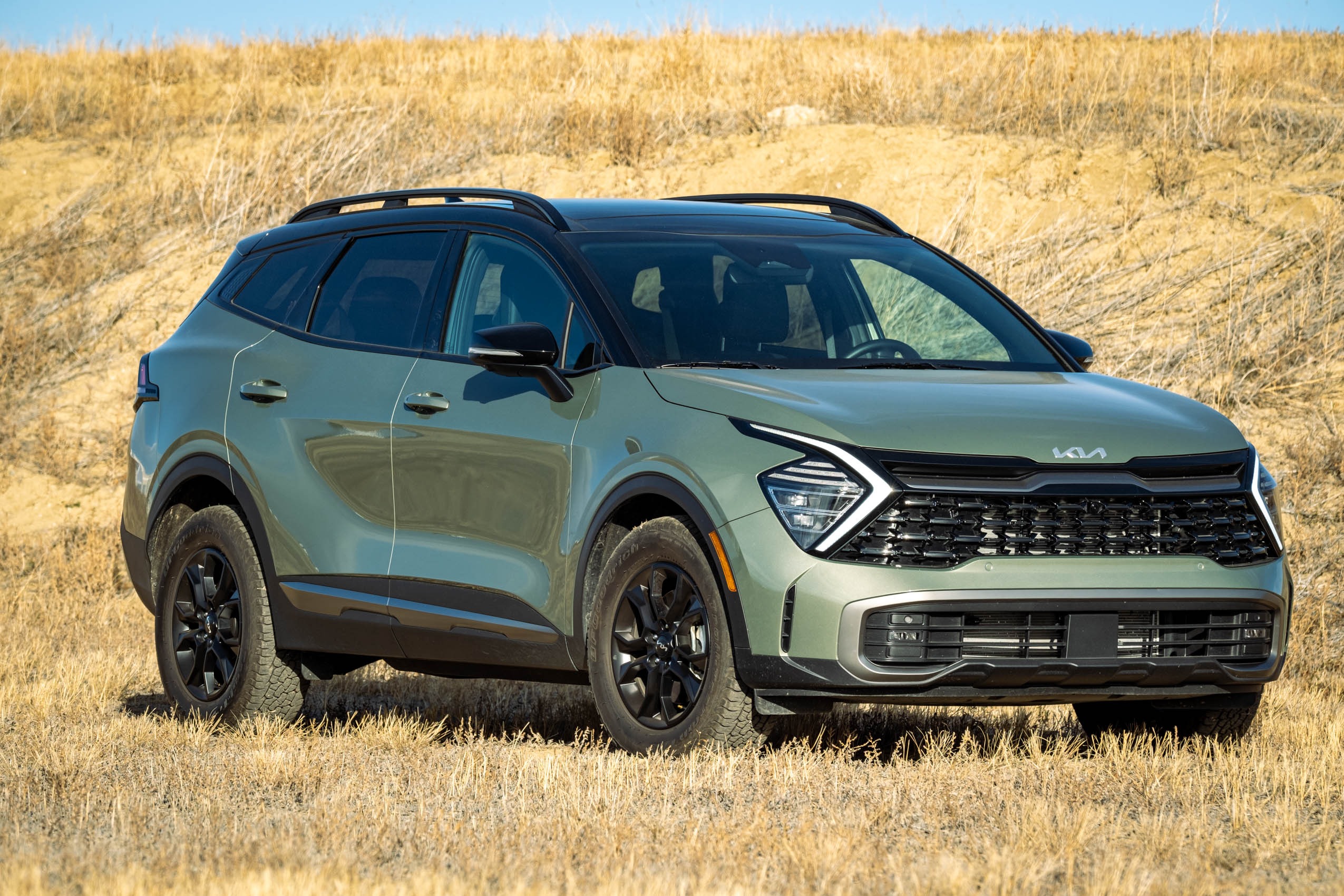
Advanced safety features in the Sportage include forward collision avoidance with cyclist detection, a system that can identify and respond to bicycles in the vehicle’s path, addressing one of the most challenging scenarios in urban driving.
The vehicle’s blind spot collision avoidance system actively monitors adjacent lanes and can apply steering corrections if the driver attempts to change lanes when another vehicle is present.
These active safety systems work in conjunction with passive safety features like multiple airbags and pre-tensioning seatbelts to provide comprehensive protection.
The Sportage’s reliability record has been consistently positive, with owners reporting satisfaction with both mechanical durability and build quality. The available turbocharged engines have proven reliable, while the hybrid powertrain offers both efficiency and dependability. Interior materials have shown good resistance to wear, and electronic systems remain stable over time.
The Sportage’s combination of strong safety ratings, reliable performance, and practical design makes it an excellent choice for buyers seeking a compact SUV that prioritizes protection without sacrificing everyday usability or long-term dependability.
Also Read: 5 Nissans That Stay Comfortable for Families vs 5 That Feel Cheap
5. 2025 Kia EV9
The 2025 Kia EV9 represents the pinnacle of Kia’s electric vehicle safety engineering, earning the IIHS Top Safety Pick+ award and demonstrating that electric vehicles can achieve the highest levels of occupant protection.
This three-row electric SUV incorporates advanced battery protection systems alongside traditional crash safety measures, creating a comprehensive safety package that addresses both conventional accident scenarios and the unique considerations associated with high-voltage battery systems.
The EV9’s structural design benefits from the low-mounted battery pack, which lowers the center of gravity and reduces rollover risk compared to traditional SUVs.
The battery pack itself is integrated into the vehicle’s structure, providing additional rigidity in side-impact scenarios while sophisticated battery management systems prevent thermal runaway in the event of damage.
The vehicle’s front and rear structures are optimized for the absence of a traditional engine, allowing for more effective crumple zone design and energy absorption.
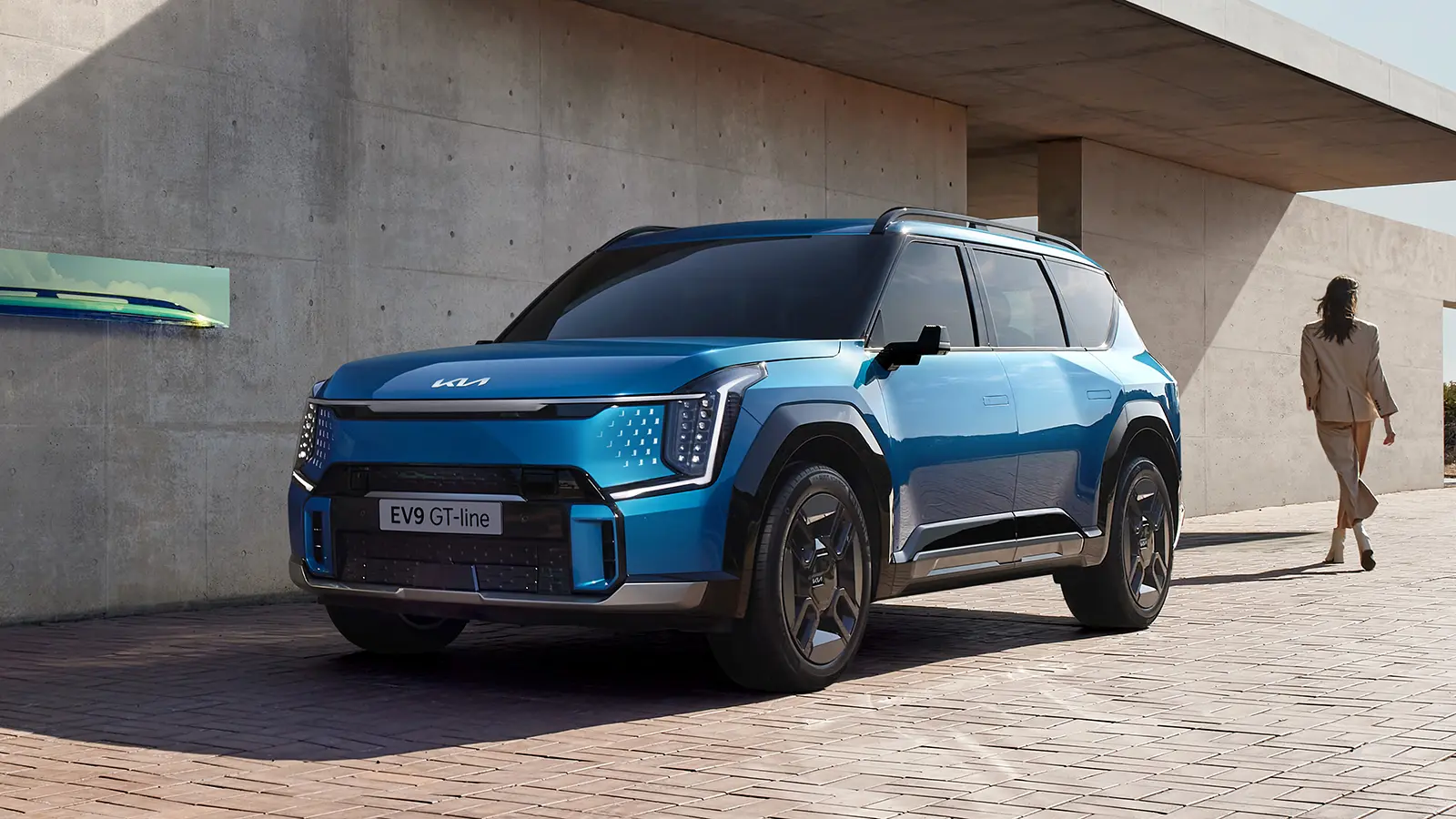
Advanced driver assistance systems in the EV9 are enhanced by the vehicle’s electric powertrain, which allows for more precise speed and torque control during emergency maneuvers.
The regenerative braking system can be integrated with emergency braking functions, providing additional stopping power when needed. Highway driving assist with curve recognition uses navigation data to anticipate upcoming curves and automatically adjust speed, while the vehicle’s remote smart parking assist can maneuver the EV9 into tight spaces without a driver present, reducing the risk of parking lot accidents.
The EV9’s electrical systems demonstrate excellent reliability, with robust battery management and thermal control systems that protect the high-voltage components from degradation. Build quality is exceptional, with premium materials and precise assembly that rivals luxury vehicles.
The vehicle’s over-the-air update capability ensures that safety systems continue to improve over time, with software enhancements that can add new features or refine existing ones. The EV9’s combination of cutting-edge safety technology, structural excellence, and electric vehicle advantages makes it a standout choice for families seeking the ultimate in sustainable and safe transportation.
5 Kias With Questionable Ratings
These concerning vehicles disappoint safety organizations with poor crash test performance, inadequate structural protection, and problematic safety systems that earn low ratings despite competitive pricing that suggests adequate protection for occupants during collision scenarios.
Their compromised designs incorporate weak structural zones, insufficient airbag coverage, and unreliable electronic systems that fail to provide expected protection during standardized testing procedures conducted by government and insurance industry organizations.
The combination of poor crash performance, inadequate safety equipment, and concerning test results creates ownership risks as buyers discover that affordable pricing cannot compensate for fundamental safety compromises that prioritize cost reduction over occupant protection.
From budget models with minimal safety equipment to mainstream vehicles with known structural weaknesses, these cars prove that Kia’s safety commitment varies significantly across model lines, transforming family transportation into concerning safety risks that fail to meet modern protection standards expected by informed consumers.
1. 2024 Kia Soul
The 2024 Kia Soul, while beloved for its distinctive styling and urban practicality, has struggled to achieve top-tier safety ratings due to structural limitations inherent in its unique design.
The Soul’s boxy, upright proportions create challenges in crash energy management that are reflected in its four-star NHTSA rating, with particular concerns in the small overlap front crash test where the vehicle’s narrow structure struggles to effectively redirect impact forces away from the passenger compartment.
The Soul’s structural challenges are most evident in side-impact scenarios, where the vehicle’s tall, narrow profile and limited door frame reinforcement result in concerning intrusion measurements during IIHS testing.
The vehicle’s high seating position, while providing excellent outward visibility, also contributes to a higher center of gravity that affects stability in emergency maneuvers.
The Soul’s lightweight construction, optimized for fuel efficiency, sometimes comes at the expense of structural robustness, particularly in the rear structure where impact protection is less comprehensive than in larger Kia vehicles.
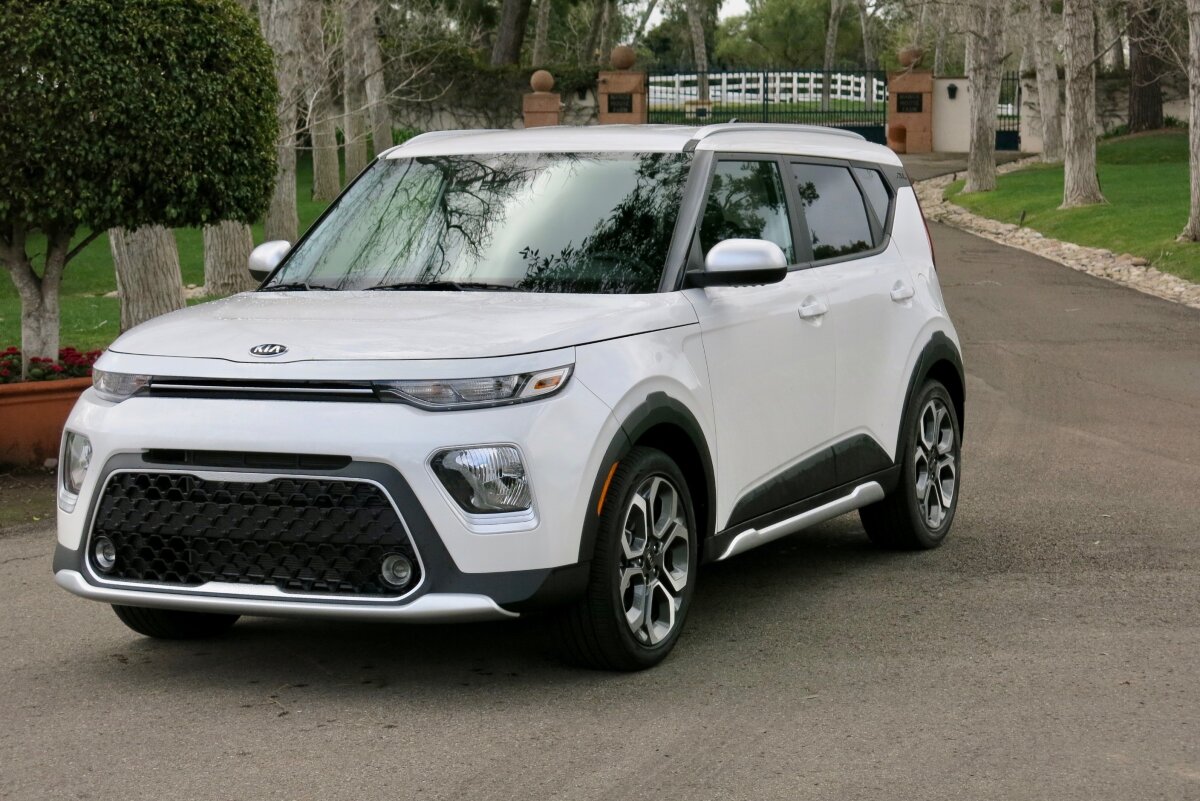
Safety technology in the Soul is adequate but not comprehensive, with forward collision avoidance and lane keeping assist available but lacking the sophistication found in other Kia models.
The system’s radar and camera sensors occasionally struggle with false positives in urban environments, leading some drivers to disable these features.
Blind spot monitoring is available but doesn’t include the collision avoidance intervention found in higher-tier Kia models, limiting its effectiveness in preventing lane-change accidents.
Reliability concerns with the Soul center around its continuously variable transmission (CVT) in certain model years, which has shown premature wear and occasional failure issues.
The vehicle’s suspension components, optimized for ride comfort over durability, sometimes require early replacement, particularly in areas with poor road conditions.
Interior build quality, while improved in recent years, still shows signs of cost-cutting with some materials and controls feeling less robust than those in other Kia models.
While the Soul remains an appealing choice for urban drivers seeking distinctive styling and maneuverability, potential buyers should carefully consider these safety and reliability limitations against the vehicle’s unique advantages.
2. 2024 Kia Seltos
The Kia Seltos occupies a challenging position in the subcompact SUV segment, where intense price competition has led to compromises that affect both safety performance and long-term reliability.
While the Seltos offers attractive styling and competitive features, its IIHS testing results reveal areas where cost optimization has impacted structural integrity, particularly in the small overlap front test where the vehicle struggles with wheel displacement and structural deformation that could pose risks to occupant safety.
The Seltos’ structural design reflects the constraints of its price point, with a mix of conventional and high-strength steels that, while adequate for most crash scenarios, lacks the ultra-high-strength materials found in Kia’s more expensive models.
The vehicle’s side-impact protection is particularly concerning, with door frame intrusion measurements that exceed ideal thresholds and suggest that occupant protection could be compromised in severe side-impact crashes.
The subcompact SUV’s ground clearance and proportions also contribute to a higher rollover risk compared to traditional sedans.
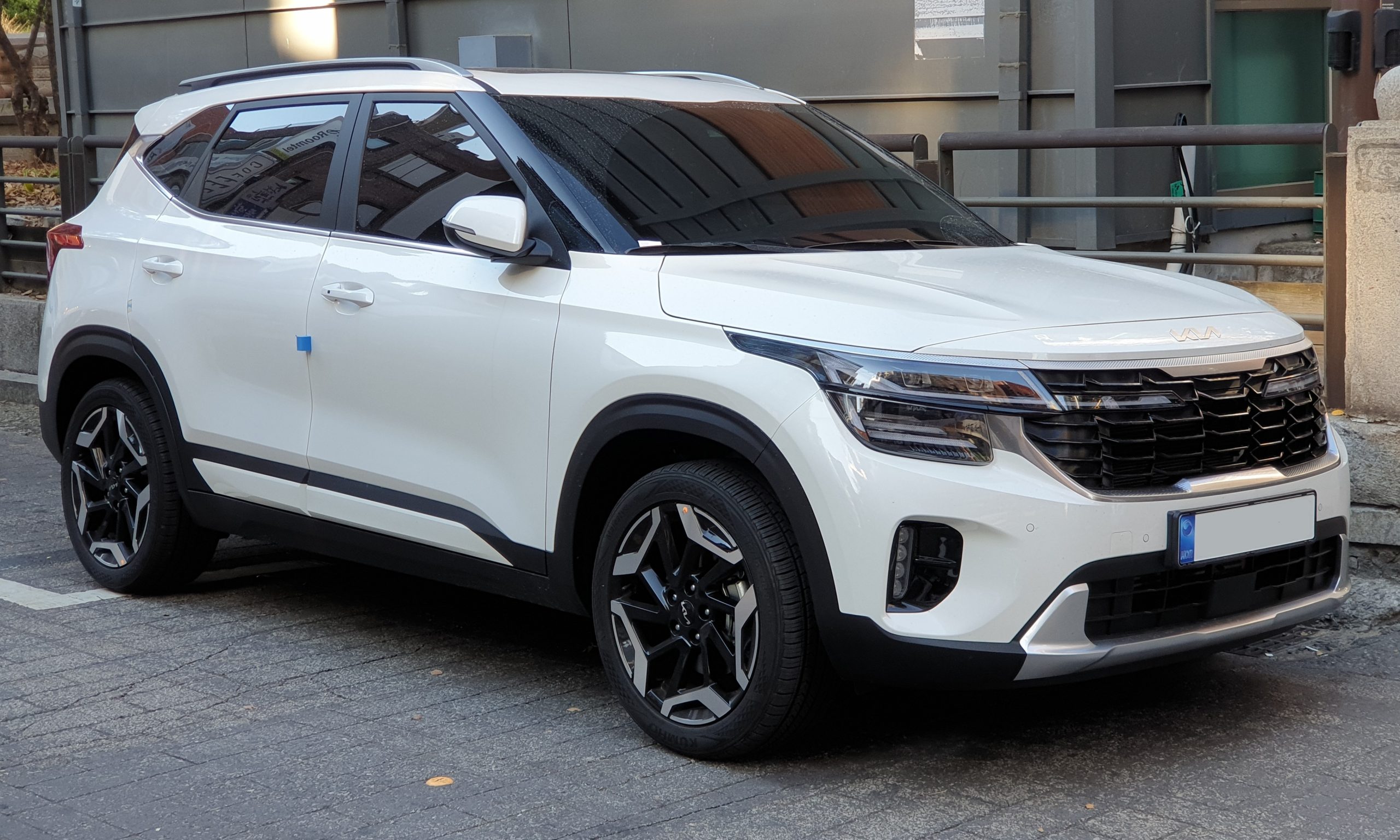
Safety technology integration in the Seltos is inconsistent, with some advanced features like forward collision avoidance working well in ideal conditions but struggling with reliability in challenging weather or lighting conditions.
The vehicle’s camera-based systems are particularly affected by rain, snow, or bright sunlight, leading to system deactivation when protection might be most needed.
Lane keeping assist can be intrusive and imprecise, sometimes providing steering inputs that feel unnatural or inappropriate for road conditions.
Reliability issues with the Seltos include concerns about the dual-clutch transmission’s long-term durability, with some owners reporting premature clutch wear and occasional shifting irregularities.
The vehicle’s turbo-charged engine, while providing good performance and efficiency, has shown susceptibility to carbon buildup that can affect performance over time.
Interior materials, while initially attractive, have shown premature wear in high-contact areas, and some electronic systems have experienced glitches that require dealer service.
The Seltos’ combination of structural compromises and reliability concerns makes it a vehicle that requires careful consideration, particularly for buyers prioritizing long-term ownership satisfaction and comprehensive safety protection.
3. 2024 Kia Carnival
The Kia Carnival, while offering impressive space utilization and family-friendly features, faces inherent safety challenges common to the minivan segment that are compounded by some specific design limitations.
The vehicle’s large sliding doors create structural weak points that affect side-impact protection, and IIHS testing reveals concerning door frame intrusion levels that could compromise occupant safety in severe side collisions.
The Carnival’s extended wheelbase and high seating position also contribute to handling characteristics that can be challenging in emergency situations.
The Carnival’s structural design prioritizes interior space over crash protection optimization, resulting in crumple zones that are less effective than those found in dedicated SUV platforms.
The vehicle’s unibody construction, while lighter than traditional body-on-frame designs, creates flex points that can affect crash energy distribution.
The minivan’s large glass areas, while providing excellent visibility, also represent potential safety concerns in rollover scenarios where roof strength becomes critical for occupant protection.
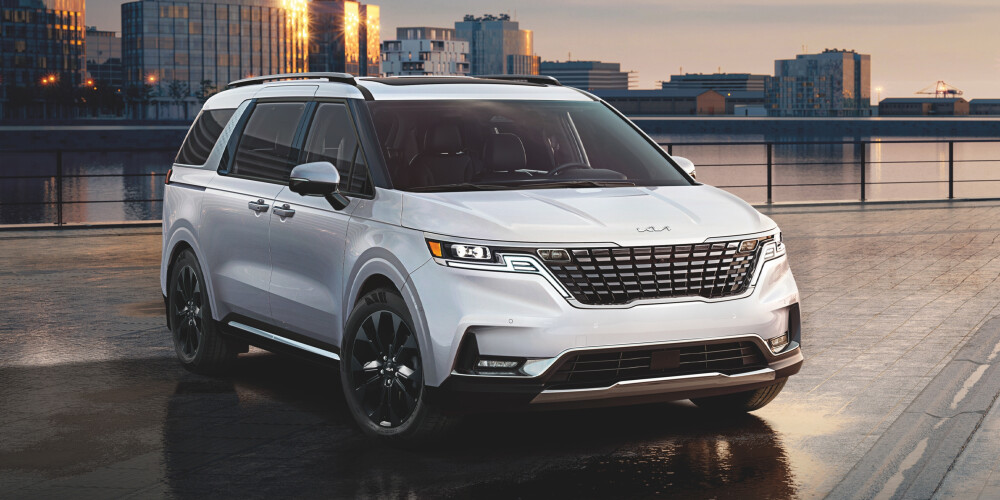
Advanced safety systems in the Carnival are comprehensive on paper but struggle with the practical challenges of minivan operation.
Rear cross-traffic alert can be confused by the complex parking situations that minivan drivers frequently encounter, while the vehicle’s size makes some driver assistance features less effective.
The Carnival’s backup camera and parking sensors are essential given the vehicle’s dimensions, but blind spots remain significant, particularly when children are present around the vehicle.
Reliability concerns with the Carnival include transmission issues that have affected some units, with reports of premature failure requiring expensive repairs.
The vehicle’s sliding door mechanisms, while convenient, represent complex mechanical systems that are prone to wear and occasional malfunction, particularly in environments with sand, salt, or other contaminants.
Interior wear is accelerated by the heavy family use that minivans typically experience, and some electronic systems have shown susceptibility to issues related to the multiple USB ports and power outlets that families rely on.
While the Carnival offers unmatched utility for large families, potential buyers should carefully weigh these safety and reliability considerations against their specific needs and usage patterns.
4. 2023-2024 Kia EV6
The Kia EV6, despite its innovative design and impressive electric performance, has experienced reliability challenges that have affected its rating and owner satisfaction.
Consumer Reports noted a significant drop in the EV6’s reliability rating from 91 to 77 between 2023 and 2024, primarily due to issues with the vehicle’s complex electrical systems and charging infrastructure compatibility.
These problems highlight the challenges automakers face when transitioning to electric powertrains, particularly in first-generation models.
The EV6’s electrical system issues range from minor software glitches to more serious problems with the vehicle’s high-voltage charging system.
Some owners have reported instances where the vehicle fails to charge properly, either at home or at public charging stations, creating range anxiety and potential safety concerns if the vehicle becomes stranded with low battery power.
The vehicle’s over-the-air update system, while intended to improve functionality, has occasionally introduced new problems or failed to install properly, requiring dealer intervention.
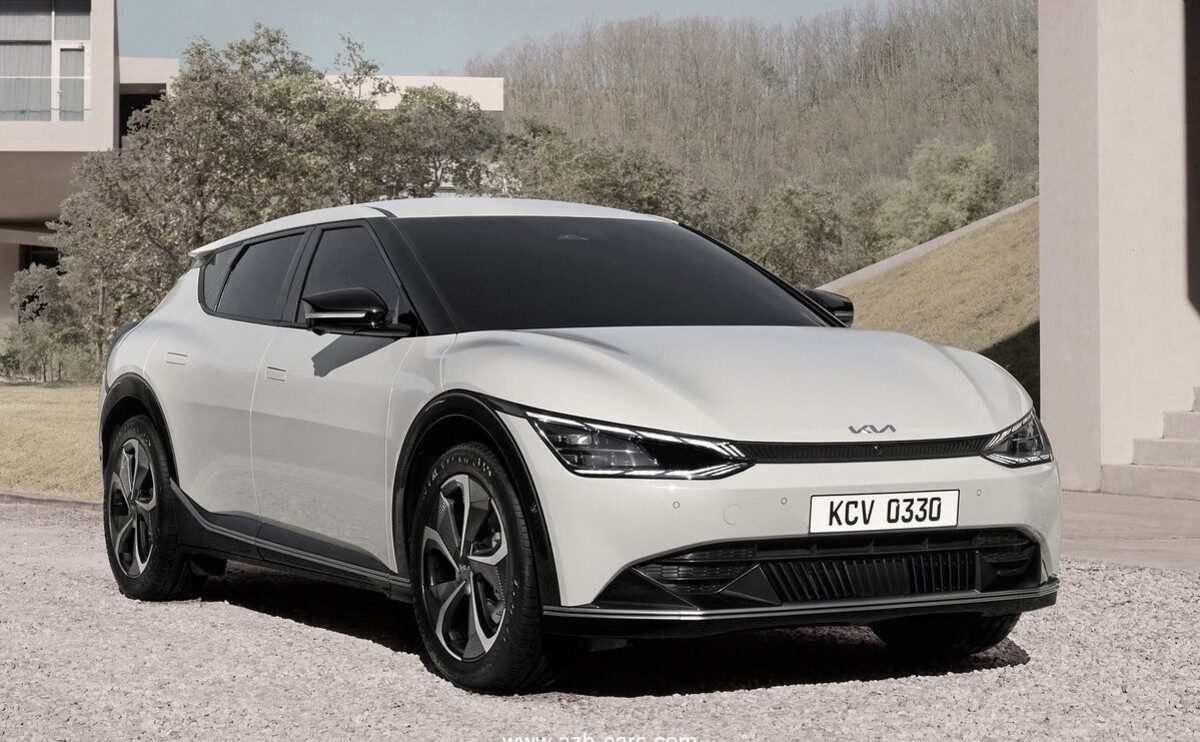
Software integration problems affect multiple systems in the EV6, including the infotainment system, climate control, and even some safety features.
The vehicle’s advanced driver assistance systems can be affected by software issues, leading to unexpected deactivation or inappropriate responses to road conditions.
These reliability concerns are particularly problematic in an electric vehicle where many functions are integrated into the central computer system, meaning a single failure can affect multiple vehicle systems.
Physical reliability issues include reports of premature wear in door seals and weather stripping, potentially leading to water intrusion and associated electrical problems.
The EV6’s charging port cover has shown durability issues in some climates, and the vehicle’s complex thermal management system for the battery pack has experienced failures that can be expensive to repair.
While Kia has worked to address these issues through recalls and service campaigns, the EV6’s early reliability problems demonstrate the challenges of introducing complex new technology, making it a vehicle that potential buyers should approach with awareness of potential ownership complications.
5. 2024 Kia Forte
The Kia Forte, positioned as Kia’s entry-level sedan, demonstrates how price pressures in the compact car segment can impact safety performance and build quality.
While the Forte offers competitive features and attractive styling, its IIHS testing results reveal structural limitations that reflect the cost-cutting necessary to maintain its competitive pricing.
The vehicle’s performance in the small overlap front test shows concerning levels of intrusion and structural deformation that could affect occupant protection in severe crashes.
The Forte’s structural design relies heavily on conventional steel construction with limited use of the ultra-high-strength materials found in more expensive Kia models.
This approach, while cost-effective, results in increased weight requirements to achieve adequate strength, which in turn affects fuel economy and handling.
The vehicle’s side-impact protection is adequate but not exceptional, with door frame design that prioritizes manufacturing economy over optimal crash protection.
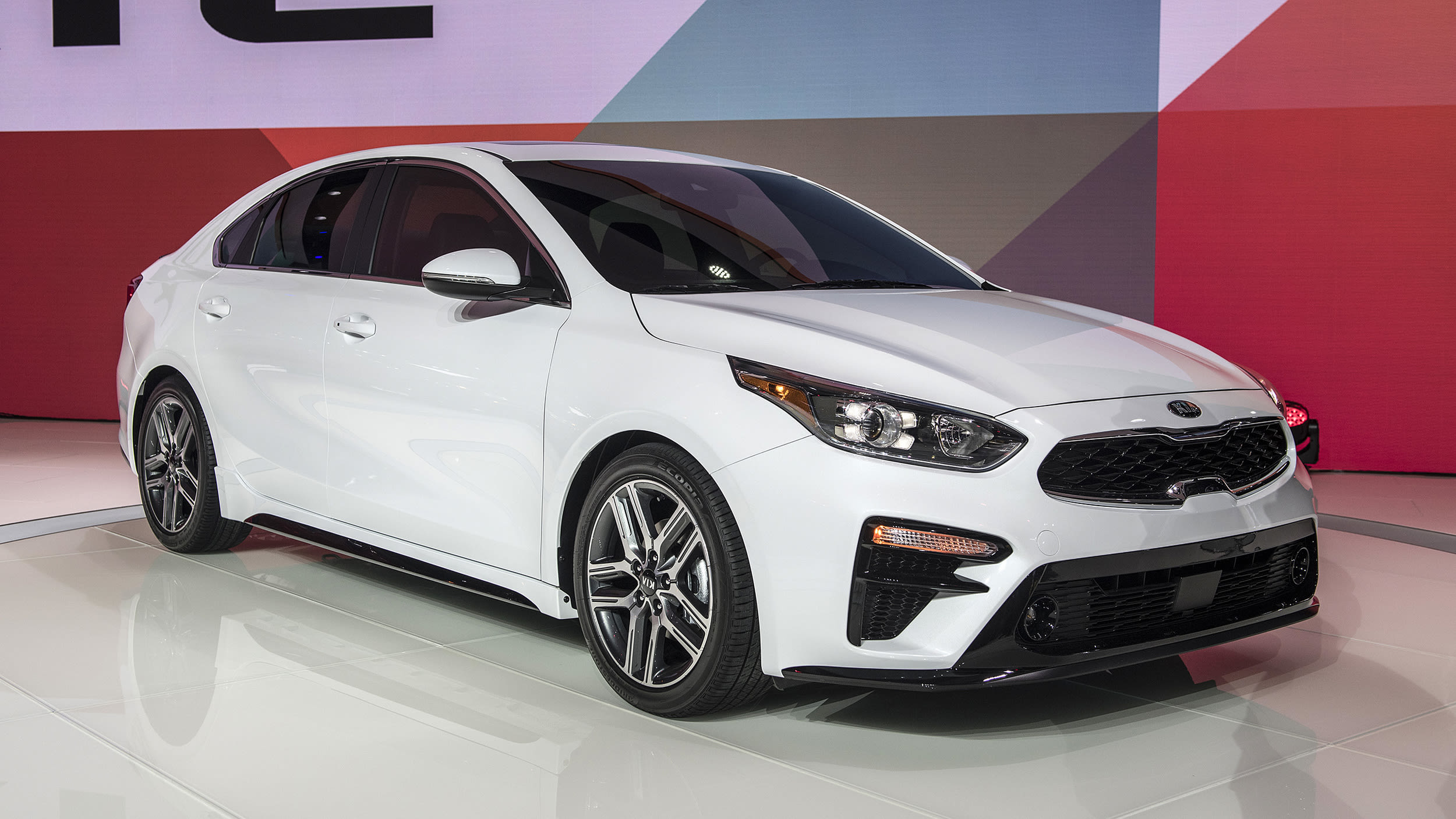
Safety technology in the Forte is basic compared to other Kia models, with forward collision avoidance and lane departure warning available but lacking the sophistication and reliability found in higher-tier vehicles.
The system’s sensors are less advanced, leading to reduced effectiveness in challenging conditions and a higher rate of false alarms that can lead drivers to disable the features.
Blind spot monitoring, when available, lacks the intervention capability that can actively prevent accidents. Build quality and reliability concerns with the Forte include reports of premature interior wear, particularly in seat materials and dashboard components that show signs of degradation earlier than expected.
The vehicle’s CVT transmission has experienced durability issues in some cases, with reports of premature failure requiring expensive repairs. Engine components, while generally reliable, have shown sensitivity to maintenance intervals, with some owners experiencing issues when service schedules are not strictly followed.
The Forte’s electrical systems, simplified to reduce costs, sometimes struggle with the integration of modern convenience features, leading to occasional glitches and reliability concerns.
While the Forte remains a viable choice for budget-conscious buyers, its safety and reliability limitations should be carefully considered against alternatives that may offer better long-term value and protection.
Also Read: 5 Hyundais That Rarely Need Tires vs 5 That Eat Rubber Every Year

